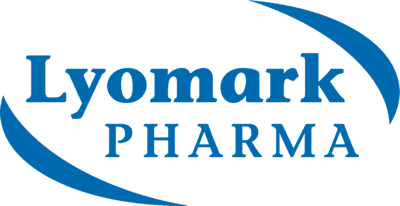预约演示
更新于:2025-05-07
SSTR5 x SSTR1 x SSTR3 x SSTR2
更新于:2025-05-07
关联
4
项与 SSTR5 x SSTR1 x SSTR3 x SSTR2 相关的药物作用机制 SSTR1激动剂 [+4] |
原研机构- |
最高研发阶段批准上市 |
首次获批国家/地区 加拿大 |
首次获批日期1997-11-10 |
作用机制 SSTR1激动剂 [+4] |
在研机构- |
在研适应症- |
非在研适应症 |
最高研发阶段无进展 |
首次获批国家/地区- |
首次获批日期1800-01-20 |
112
项与 SSTR5 x SSTR1 x SSTR3 x SSTR2 相关的临床试验NCT06784752
A Phase III Multi-center, Randomized, Open-label Study to Evaluate the Efficacy and Safety of [177Lu]Lu-DOTA-TATE in Patients Newly Diagnosed With Grade 1 and Grade 2 (Ki-67 <10%) Advanced GEP-NET With High Disease Burden (NETTER-3)
The purpose of the current study is to evaluate the efficacy and safety of [177Lu]Lu-DOTA-TATE plus octreotide long-acting release (LAR) versus octreotide LAR alone in newly diagnosed patients with somatostatin receptor positive (SSTR+), well differentiated Grade1 and Grade 2 (G1 and G2) (Ki-67 <10%) advanced gastroenteropancreatic neuroendocrine tumors (GEP-NETs) with high disease burden
开始日期2025-05-06 |
NCT06456359
Pasireotide as Maintenance Treatment With Monthly Deep Intramuscular Injection in SSTR2/3/5-Expressing Synovial Sarcoma and Desmoplastic Small Round Cell Tumor
PAMSARC is a non-commercial interventional Phase 2 clinical trial of academic research institutions, with its primary goal being to improve medical treatment of fusion driven Desmoplastic small round cell tumor (DSRCT) and Synovial sarcoma (SySa) in young adults and adolsecents with male predominance.
Current management of DSRCT and SySa includes chemotherapy, radiation and aggressive cytoreductive surgery. Despite advances in multimodal therapy, outcomes remain poor with frequent disease recurrence and very limited options for patients with advanced disease.
Selected somatostatin receptor (SSTR) family members, i.e., SSTR2, SSTR3 and SSTR5, are frequently overexpressed in DSRCT and SySa, providing the rationale for treatment with somatostatin analogues (SSA).
Pasireotide is a SSA with high affinity for SSTR1, -2, -3, and -5 and is approved for the treatment of Cushing's disease and acromegaly and has also shown activity in other cancers. In patients with advanced stage DSRCT and SySa, conventional chemotherapeutic approaches frequently lead to disease response, however, the duration of progression-free time after chemotherapy is short. The targeted approach with pasireotide after initial intensive multimodal treatment may have the potential to significantly improve outcome.
Current management of DSRCT and SySa includes chemotherapy, radiation and aggressive cytoreductive surgery. Despite advances in multimodal therapy, outcomes remain poor with frequent disease recurrence and very limited options for patients with advanced disease.
Selected somatostatin receptor (SSTR) family members, i.e., SSTR2, SSTR3 and SSTR5, are frequently overexpressed in DSRCT and SySa, providing the rationale for treatment with somatostatin analogues (SSA).
Pasireotide is a SSA with high affinity for SSTR1, -2, -3, and -5 and is approved for the treatment of Cushing's disease and acromegaly and has also shown activity in other cancers. In patients with advanced stage DSRCT and SySa, conventional chemotherapeutic approaches frequently lead to disease response, however, the duration of progression-free time after chemotherapy is short. The targeted approach with pasireotide after initial intensive multimodal treatment may have the potential to significantly improve outcome.
开始日期2024-12-19 |
NL-OMON57054
*Managing pasireotide-associated hyperglycaemia in acromegaly with eucaloric very-low carbohydrate ketogenic diet versus diabetes medication: a multicentre, randomized, open-label proof-of-concept study* - PasiAcroKeto
开始日期2024-07-01 |
申办/合作机构- |
100 项与 SSTR5 x SSTR1 x SSTR3 x SSTR2 相关的临床结果
登录后查看更多信息
100 项与 SSTR5 x SSTR1 x SSTR3 x SSTR2 相关的转化医学
登录后查看更多信息
0 项与 SSTR5 x SSTR1 x SSTR3 x SSTR2 相关的专利(医药)
登录后查看更多信息
110
项与 SSTR5 x SSTR1 x SSTR3 x SSTR2 相关的文献(医药)2024-12-01·Cell Calcium
Distribution and calcium signaling function of somatostatin receptor subtypes in rat pituitary
Article
作者: Constantin, Stephanie ; Sokanovic, Srdjan J. ; Sherman, Arthur S ; Sivcev, Sonja ; Stojilkovic, Stanko S ; Fletcher, Patrick A ; Sherman, Arthur S. ; Sokanovic, Srdjan J ; Stojilkovic, Stanko S. ; Smiljanic, Kosara ; Fletcher, Patrick A. ; Zemkova, Hana
2024-12-01·Computational and Structural Biotechnology Journal
Exploring key features of selectivity in somatostatin receptors through molecular dynamics simulations
Article
作者: Malloci, G ; Gervasoni, S ; Guccione, C ; Ruggerone, P ; Bosin, A ; Öztürk, I
2024-07-01·Veterinary Medicine and Science
Expression of somatostatin receptors in canine and feline meningioma
Article
作者: Gradner, Gabriele ; Wolfram, Michael ; Oevermann, Anna ; Tichy, Alexander ; Wolfesberger, Birgitt ; Immler, Martin ; Walter, Ingrid
分析
对领域进行一次全面的分析。
登录
或

生物医药百科问答
全新生物医药AI Agent 覆盖科研全链路,让突破性发现快人一步
立即开始免费试用!
智慧芽新药情报库是智慧芽专为生命科学人士构建的基于AI的创新药情报平台,助您全方位提升您的研发与决策效率。
立即开始数据试用!
智慧芽新药库数据也通过智慧芽数据服务平台,以API或者数据包形式对外开放,助您更加充分利用智慧芽新药情报信息。
生物序列数据库
生物药研发创新
免费使用
化学结构数据库
小分子化药研发创新
免费使用



